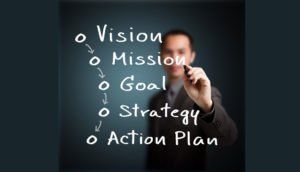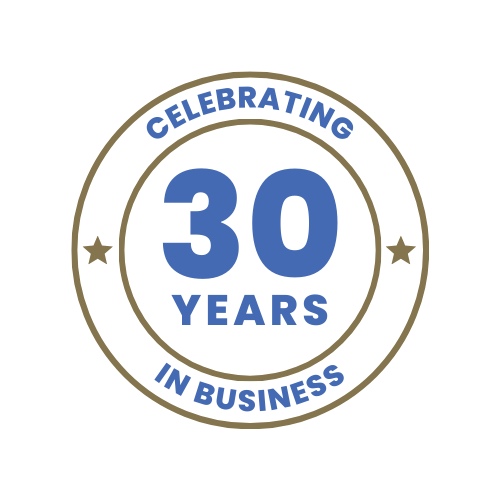Leader Coaching
- By geff@wsielevateddigital.com
- •
- 02 Jun, 2018
- •
Overview
Leader Coaching is a one-on-one relationship between a leader within a company and a coach with the explicit purpose of helping the leader through difficult change initiatives. The change initiative may involve just the leader or the larger team or group the leader works within. In either case, the responsibility for successfully bringing about the change the organization needs lies with the leader. The coaching relationship goes beyond just giving advice. It includes a joint commitment to success.
The process of bringing about a positive change in individuals follows a particular sequence:
- Individual is aware of the issue blocking a successful change initiative, whether in self or with his/her team.
v Example: a manager needs to improve personal performance in some area(s) that will be critical to his/her ability to lead and grow with the organization.
- Improving communication skills and building better relationships.
- Developing personal, interpersonal and emotional effectiveness.
- Improving leadership and management skills.
- Facilitating team building with others.
Example: a manager needs to improve the performance of a division, business unit, group or team that is not measuring up to company expectations, either in terms of financial performance or some other metric important to the company, e.g. quality, customer service, teamwork, innovation, etc.
- Individual wants to address the issue(s) impeding successful change in order to bring about more positive results for self and organization.
- Individual develops or is provided the tools and/or insights to bring about positive change.
- Individual maps out a program to successfully bring about successful change with specific actions and milestones. The program may involve only the individual leader or it may involve others from within the organization: superior, peers, subordinates or other unrelated organization members.
- Individual works, over time, to bring about needed change in self and, if indicated, broader system team members.

Attributes of Leader Coaching
- Coach helps to reduce leader’s anxiety and get leader “unstuck” from dilemmas.
- Coach and leader jointly focus on key goals and business results rather than immediate issues.
- Coaching process links leader AND team behaviors to bottom line results.
- Coach helps leader develop his/her own skills, resources and unique presence. Coaching process builds leader’s capacity to manage and lead in his/her own unique style.
- Coach invests time and energy to fully understand and address larger system forces at play within company or organization.
- Coach encourages rigor in thinking, visioning, planning and setting of expectations for leader and leader’s team.
- Coach challenges leader and gives real time feedback on leader’s performance. At the same time, Coach provides support and operates from a position of empathy for leader.
- Coach is a proactive agent for change with leader as partner.
- Coaching can be “behind the scenes” or “live-action” involving interaction with the leader’s team(s) and other groups. In “live action”, the leader defines and sponsors the Coach’s role.
- Joining with the leader, establishing the human connection and mutual trust critical to moving forward.
- Understanding the leader’s apparent challenge.
- Testing the leader’s ability to “own” his/her part of the issue.
- Giving immediate feedback.
- Establishing an explicit “contract”.
- Define specific content and sequence of meetings.
- Define any other requirements from either side necessary for a successful coaching process.
- Setting measurable goals. Categories include:
- Bottom line.
- Work process.
- Human relations.
- Personal performance.
- Identify specific actions to address goals established in previous step.
- Help leader identify his/her side of, and role in, the change initiative to be addressed.
- Address organization and role alignment issues.
- Plan for resistance to leader’s action steps.
- Decide on “behind the scenes” or “live action” coaching.
- Level 1 – Behind the Scenes:
- Coaching the leader based on information provided by the leader about interactions where the Coach is not present or where the coach was present as a neutral observer to a group session.
- Level 2 – Live Action; Coaching a Group:
- Coach intervenes, as appropriate, during a “live action” group session. The “client” is the entire group.
- Level 3 – Live Action; Coaching the Leader in a Group Setting:
- Coach provides real-time feedback to the leader in order to build his/her group-leading skills and effectiveness. The “client” is the leader.
- Level 4 – Live Action; Coaching the Leader in a One-on-One Session:
- Coach provides feedback to the leader during a one-on-one session with another individual in a order to build his/her interpersonal skills and effectiveness.
- Evaluate the leader’s effectiveness:
- Assess strengths.
- Celebrate achievements and challenges overcome.
- Identify key recurring patterns that were either successfully broken or remain an issue.
- Review the leader’s skills in 12 different management competencies.
- Assess the alignment of roles within the organization.
- Evaluate the Coach’s effectiveness.
- Develop a plan for the leader’s “next steps”.
Phases of Coaching[1]
1. Contracting
2. Action Planning
3. Action Coaching
4. Debriefing
[1] Broadly based on the work of Mary Beth O’Neill, author of Executive Coaching with Backbone and Heart.
Other Posts

I recently posted an article published in Forbes about T. Boone Pickens, famous for an active entrepreneurial life and his book, The First Billion is the Hardest . Every year around this time, he’s asked to share his wisdom, gathered over many decades, with some college graduating class in the U. S. The Forbes article includes six “Booneisms” he’s known for, but the one I like the most is, “A fool with a plan can beat a genius with no plan.”
Although the CEOs and senior managers I regularly work or interact with are certainly NOT fools, all too often they’re working without a plan. While it may be okay on Saturday to get up and “let the day take you”, that’s not a good recipe for business, large or small. Too much is at stake!
The ideal planning sequence takes place in the context of shared values and a true team of managers committed to each other AND a common goal. (I’ve often said to management teams, “You don’t have to like each other, but you MUST be able to communicate effectively and solve problems together as you work to achieve your objectives.”)


Yesterday, a friend and colleague said she was having trouble “holding herself accountable”. She wasn’t getting things done that she thought she should be, including some things she deemed important to the business. For perspective, this woman is running a business, supervising a stable workforce and keeping multiple clients happy. On top of all that, she’s a mom! (Can you say “busy”?)
The conversation quickly went to a few questions:
- What are you not achieving?
- Where’s the breakdown?
- What are your goals?


Effective communication is one of the key functions of management, yet we frequently find ourselves frustrated with others not understanding what we have shared. After we say our piece, we assume that others see things the same way we do but the only thing we can be sure of, even after a lengthy conversation, is that what’s in your mind is not exactly the same in their mind. We just hope the gaps are few and insignificant.
The problem is even worse if the communication comes in the form of a management “presentation” with little/no opportunity for dialogue. I once spent an hour presenting “how we make money” to a group of front-line employees: Revenue – (Material + Labor + Manufacturing Overhead + Other Overhead) = Profit. The presentation was complete with flipchart graphics. It was clear from some of the questions at the end of the presentation that some of the employees still looked at Revenue as the amount of money theoretically distributable to all the members of the company. While frustrating, this incident just confirmed how hard it is to be truly effective in your communication. Also, it’s important to keep in mind that the primary responsibility for the effectiveness of communication lies with whoever is sending the message.
Studies have shown that managers typically under communicate but think they did a good job. It’s not just executive management. This “failure to communicate” affects all members of an organization. If you are a middle manager, you have the challenge of communicating both up and down the chain of command. If you are a front-line team member, it’s important you effectively communicate any issues or challenges you face in the performance of your job so they may be resolved. Anything less than excellent communication, at all levels, negatively impacts relationships and hurts the bottom line.
Here’s a formula for communication success:
- Preparation:
- Understand your objective. Why are you communicating?
- Understand your audience. What do they need to know?
- Plan what you want to say.
- Choose the best communication channel:
- One-on-one conversation
- Team presentation/discussion
- Written document:
- Match your style to reader’s preferences
- Avoid jargon or slang
- Check your grammar and punctuation
- Check for tone and attitude
- Email/text for simple directions (NEVER email/text complex or negative content.)
- Consider:
- Cultural context of organization
- Potential emotional content
- Need for detail
- The need to ask and answer questions
- Draft:
- Decide exactly what to convey.
- As much as possible, use pictures, charts, diagrams.
- Verbal: prepare written notes to guide the conversation.
- Written: draft document/presentation for sharing. Review as necessary to ensure effectiveness. Send.
- If sensitive, solicit other inputs and get feedback prior to sending/engaging.
- Engage (Verbal):
- Be concise.
- Listen actively.
- Stay open.
- Be attentive and avoid distractions.
- Respect others’ feelings
- Don’t interrupt!
- Pay attention to body language.
- Ask questions to ensure understanding.
- Record all action items: What-Who-When.
- Follow Up:
- How effective was the communication?
- Did I/we achieve the stated objectives?
- What could we do to improve communication?
Effective communication is an art that all of us would do well to master, for our own good and that of our organization. Are you getting the results you want from your communication or are you constantly thinking, “Why don’t they get it?”
Comer and Associates, LLC develops great leaders and teams and facilitates projects that lead to growth and profit. Our April 11 – 13 ADVANCE management and leadership workshop will cover all the key functions of management, including communication.
